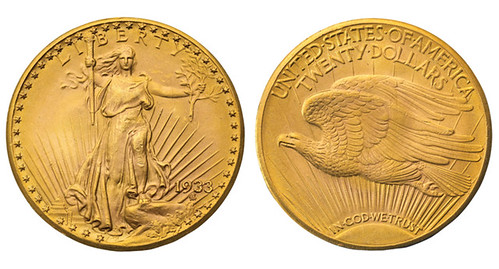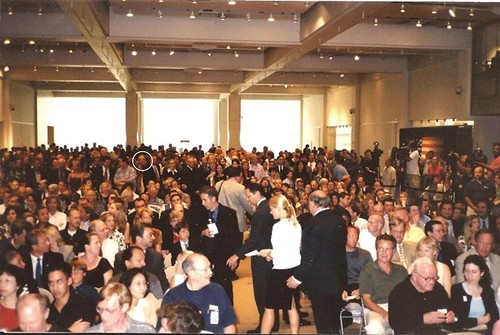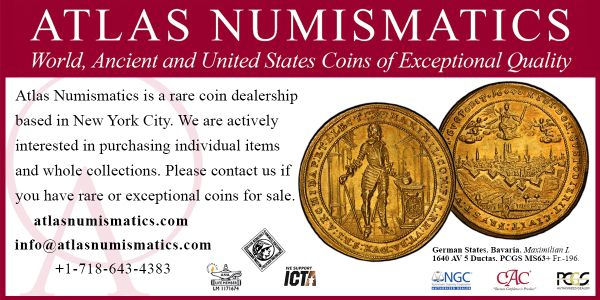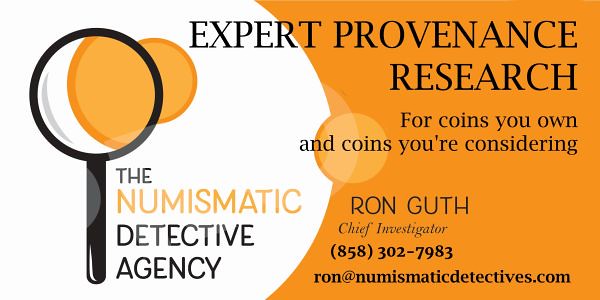
PREV ARTICLE
NEXT ARTICLE
FULL ISSUE
PREV FULL ISSUE
THE ONE LOT 1933 DOUBLE EAGLE AUCTIONE-Sylum Feature Writer and American Numismatic Biographies author Pete Smith submitted his article on the landmark 2002 sale of the Farouk specimen of the 1933 Double Eagle, which was originally published in The Northwest Angle, the newsletter for the Northwest Coin Club. We're republishing it here with permission. Thanks! -Editor
Been There: Done That
The One Lot Auction
In 2002, I attended the American Numismatic Association Convention at the Marriott Marquis
Hotel in Times Square in New York City. I was rooming with Harold Welch at the Milford Plaza,
On another day we took a bus downtown and got off at Trinity Church where Alexander Hamilton is buried. There were many 9-11 memorial markers placed in their fence. Harold and I walked to the site of The World Trade Center. By then the rubble had been removed leaving a large hole in the ground. Some nearby buildings were covered in plastic sheeting while waiting for repair. Later we walked past Federal Hall and the New York Stock Exchange. The auction of a 1933 Double Eagle was scheduled at Sotheby's on the day before opening of the convention. This coin was thought to be unique and the only example that would ever be monetized and legal to own. It had been owned by King Farouk but was withdrawn before the auction of his collection and remained in Egypt after the auction. Dealer Stephen Fenton had acquired the coin in Europe and attempted to bring it back for sale in America, He was arrested by Secret Service agents who claimed ownership of the coin was illegal. Legal proceedings dragged on for five years with the coin in a Treasury vault at the World Trade Center. Fenton showed that an export license had been issued on February 29, 1944, and signed by Secretary of the Treasury Henry C. Morgenthau. Ultimately the issue was settled with an agreement. The coin would be sold with Fenton receiving half of the money and the other half going to The Treasury Department.
On Tuesday, July 30, 2002, I caught a bus up to the Metropolitan Museum of Art in Central Park.
I spent about three hours walking around and noting things I had seen in my art history books.
My biggest impression was made by Emanuel Leutze's From there I walked over to Sotheby's. It was an easy walk but I was tired after three hours on my feet in the museum. I had a can of pop and a chocolate chip cookie in the reception area to rebuild some strength. This was an important and historic numismatic event. The sale attracted a large crowd of observers interested in the sale. Like me, most had no thought of bidding on the coin. The auction room was twice as large as needed for this sale. Two blocks of folding chairs were set up but already filled when I got there. I joined the rest of the standing room crowd at the back. [See white circle on photo] The photo may give the impression that the room was full. Actually, there was open space behind me with a row of people standing back by the windows. Total crowd size probably exceeded three hundred and may have been more than five hundred. I didn't attempt to make a count. There was a designated media area along the right side of the picture. As a member of the Numismatic Literary Guild, I might have been able to get media credentials if I had planned better in advance. I might have claimed I was a reporter for the Northwest Coin Club newsletter. At the end of the room was a raised podium with the coin on display. From where I stood, it was a small gold dot. I never got close enough to really see it. I don't recall seeing bid cards in the air during the sale. The main action was from bidder representatives on the phone with their clients. The sale took less than nine minutes. The final price was $7,590,020. The split gave Fenton $3,300,000 and the Treasury Department got $3.300,000. The auction companies got 15% or $990.000. The remaining $20 went to the Treasury Department. Provisions of the sale required that the coin be monetized. The buyer's representative presented $20 to Henrietta Holsman Fore, Director of the Mint. She signed the paper monetizing the coin. I heard this happening but was not close enough to see any of it. I shared a taxi for the ride back to the hotel with my good friend, ANA Librarian Nancy Green, and a casual acquaintance, ANA Convention Manager Ruthann Brettell. The identity of the buyer would not be revealed for years. The coin was put on display at the New York Federal Reserve Bank. Later it was revealed that the buyer was Stuart Weitzman. He was a luxury shoe designer.
The coin came to auction again on June 8, 2021, in Sotheby's
To read the earlier E-Sylum articles, see:
Wayne Homren, Editor The Numismatic Bibliomania Society is a non-profit organization promoting numismatic literature. See our web site at coinbooks.org. To submit items for publication in The E-Sylum, write to the Editor at this address: whomren@gmail.com To subscribe go to: Subscribe All Rights Reserved. NBS Home Page Contact the NBS webmaster 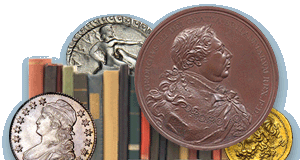
|
